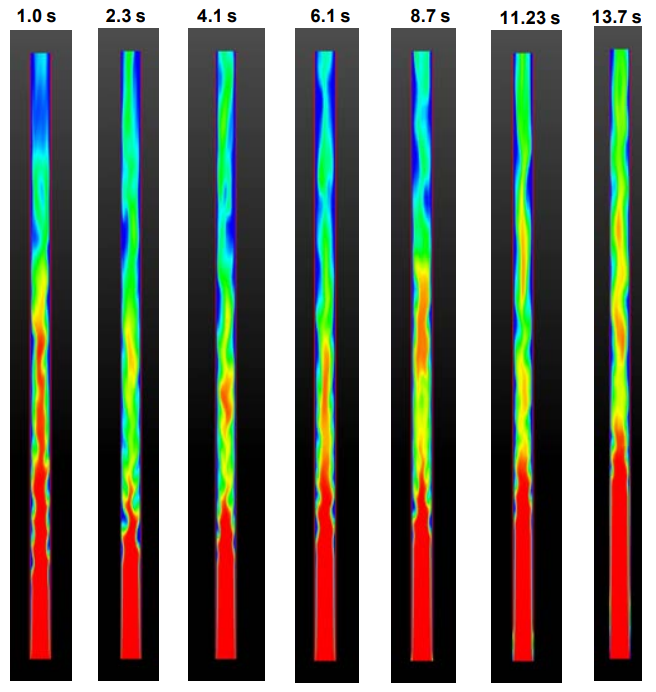We are proud to announce that Ashvin Hosangadi, alongside lead…
Simulations of Cryogenic Line Chilldown with Advanced Sub-Grid Wall Boiling Models Will Be Presented at AIAA SciTech 2024
Conference: AIAA SciTech 2024
Title: Simulations of Cryogenic Line Chilldown with Advanced Sub-Grid Wall Boiling Models
Presenter: Ashvin Hosangadi
Date: Monday, January 8
Session: LP04
Time: 2:40 PM
Abstract: A meso-scale model developed at MIT for boiling processes in water was adapted for cryogens and demonstrated for chilldown of propellant transfer lines in both liquid nitrogen and hydrogen. The sub-grid boiling model accurately captures the contributions to heat transfer from the generation of bubble nuclei, growth, and interaction of the bubbles in the microlayer as well as quenching of the boiling surface following bubble departure. It was adapted for cryogenic fluids using thermodynamic scaling concepts taking into account non-dimensional pressures and temperatures that are scaled by the corresponding critical values for the fluid. The boiling model was demonstrated for line chilldown in liquid nitrogen. The predicted wall temperature at which quenching occurs was close to the test data while the slope of the temperature curve after quenching is initiated, showing a steeper variation than the test data. Simulations were also performed for liquid hydrogen by simulating experiments of Hartwig et al. Chilldown times in liquid hydrogen are much more rapid due to higher heat transfer in the film boiling regime and accounting for the higher turbulence levels were found to be important. Furthermore, at the much lower fluid temperatures in liquid hydrogen flows, accounting for the variable thermal properties of the solid material is critical and has a dramatic impact on the quench times. The need for additional studies to better understand the evolution of the quench front in liquid hydrogen was noted.Presentation Number: AIAA-2024-0357
Authors: Vineet Ahuja1, Ashvin Hosangadi1, Timothy Weathers1, Emilio Baglietto2, Justin M. Pesich4, Mohammad Kassemi3
1Combustion Research and Flow Technology Inc, Pipersville, Pennsylvania, United States; 2Massachusetts Institute of Technology, Cambridge, Massachusetts, United States; 3Case Western Reserve University, Cleveland, Ohio, United States; 4NASA John H Glenn Research Center, Cleveland, Ohio, United States
